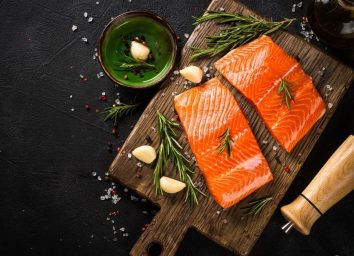8 Worst Eating Habits If You Have High Blood Pressure, Say Dietitians
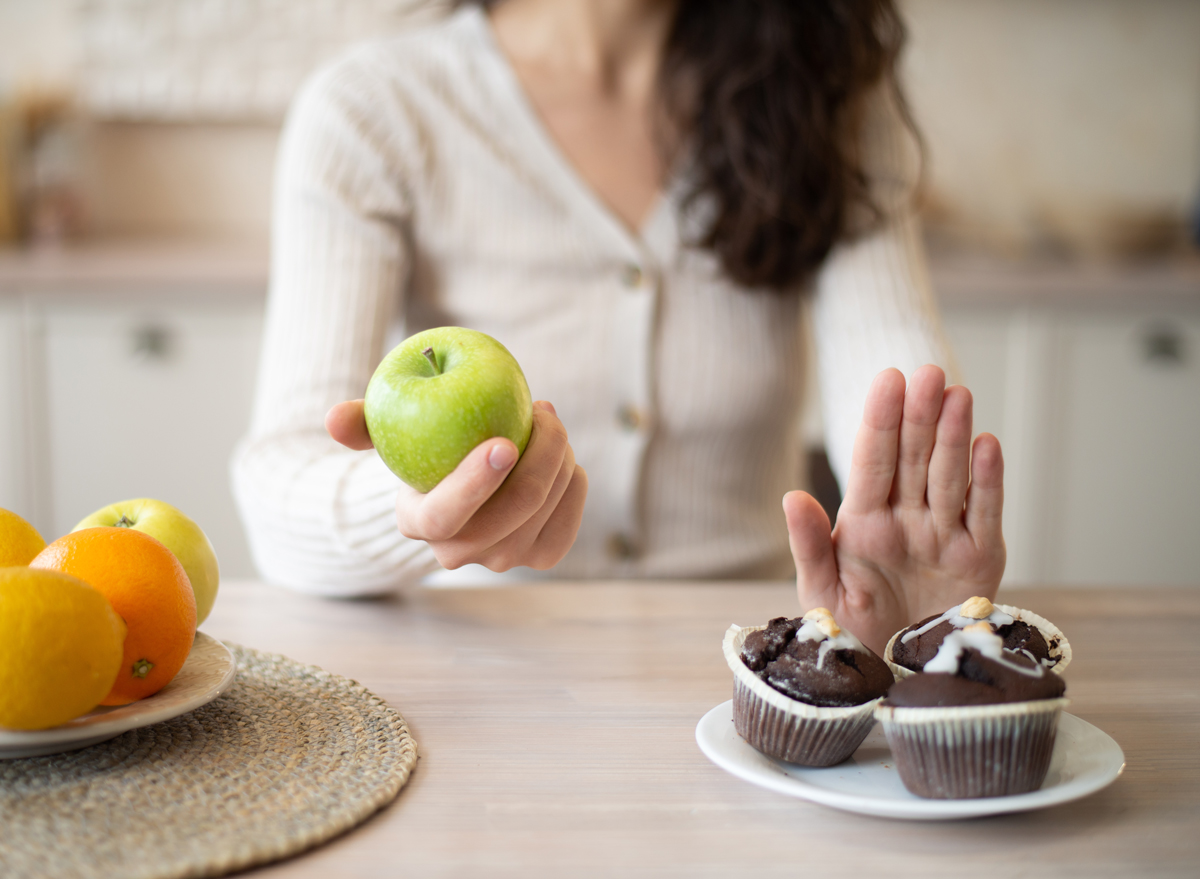
No one wants to have hypertension, also known as high blood pressure. According to the CDC, anyone who experiences this condition may not notice any symptoms at all, but you definitely notice the consequences. High blood pressure causes a number of health issues, ranging from organ damage and can lead to other issues like heart disease.
Several factors increase your chances of contracting hypertension. Smoking, living with a ton of stress, and eating the wrong foods can cause a myriad of issues that lead to this problem. By addressing how you eat and what you eat, you can easily dodge the risk of raising your blood pressure. Luckily, we talked to a handful of dietitians and learned what habits you need to break in order to beat high blood pressure.
Once you address which habits to break, make sure to start incorporating the 7 Best Foods to Eat For High Blood Pressure to truly take charge of your blood pressure.
Avoiding potassium
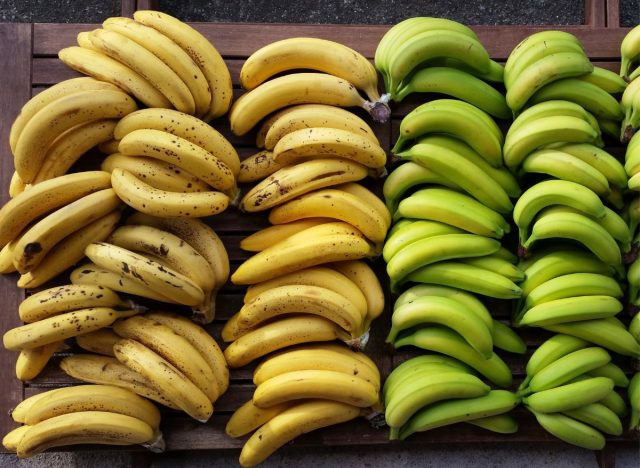
Leaving out one crucial nutrient in your diet can spell disaster in the long run.
“A high potassium food with a low sodium diet can help decrease blood pressure,” says María E. Rodríguez, MS, RD, CSR, LND. “Eat 8 to 10 servings of fruits and vegetables daily. Include potatoes, root vegetables, and beans to assure you are eating enough potassium daily. The American Heart Association recommends up to 4,700 milligrams of potassium a day.”
Get the most amount of potassium for your buck with 21 High Potassium Foods That Keep Your Muscles Healthy and Strong.
Eating too much processed food
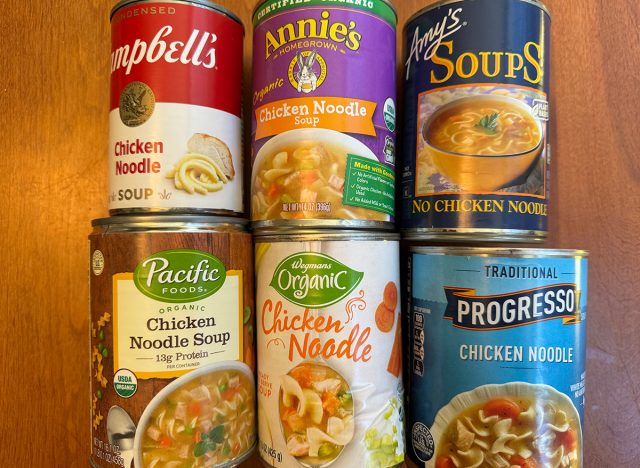
While you might not get enough potassium in your life, overeating one type of food might spell disaster for your blood pressure.
“Processed foods typically contain much more sodium than minimally processed alternatives,” says Eleana Kaidanian, RD, CDN, CPT-WFS. “For example, think boxed or canned premade soups versus DIY homemade soup, or store-bought salad dressings versus making your own. When relying on processed foods for convenience, the total sodium intake for the day can add up very quickly to monstrous levels beyond your belief.”
Constantly dining out
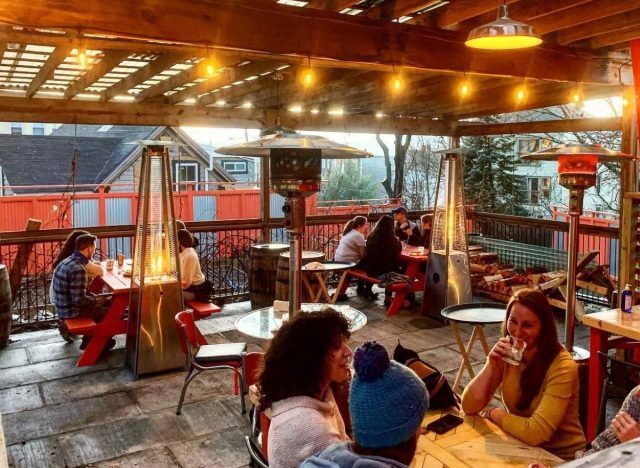
“While dining out used to be a treat back in the day, it is much more common nowadays especially when you consider take-out options,” says Kaidanian. “However, it is impossible to determine the sodium added to restaurant food, especially fewer quality foods from fast food locations.”
“You can never remove the sodium from food, however, you can be in control when adding it in,” Kaidanian continues. “This is something to consider and prioritize homemade food as much as possible or consider reducing the frequency of dining out per week. Just think, a slice of pizza from the pizzeria can contain as much as a whole day’s worth of recommended allowance for sodium, it will make you think twice if you are going back for seconds!”
Don’t feel like you need to completely ditch your favorite restaurants in favor of your blood pressure. Make sure to follow the 35 Tips for Being Healthy at Restaurants and keep indulging at your favorite eateries.
Forgetting to read the nutrition facts

“Just like you could not purchase a pair of shoes without knowing the size, you should not purchase packaged food without reading the ingredients,” says Kaidanian. “You need to know what is going on in your body and how much of it, don’t assume anything. Look at and compare the sodium levels in products.”
“For instance, [let’s look at] two brands of tomato sauce, as well as the serving size for that amount of sodium,” she says. “One tablespoon of marinara from one brand has 500 milligrams of sodium compared to another one that has 1000 milligrams for the same serving. Read the ingredient list and see if salt is one of the first ingredients or one of the last, this can also indicate how much sodium is in the product compared to other ingredients.”
“A client of mine who was recently diagnosed with hypertension was telling me about a creamer she adds in her coffee every day, multiple times a day. I asked her to read the ingredients, and the first ingredient of the creamer was salt. That was unexpected, but told us a lot about the product and made finding a sodium-free alternative more receptive.”
Drinking too much
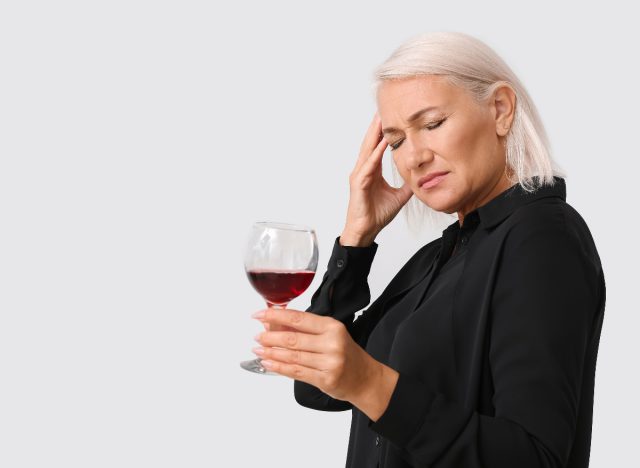
Overindulging in alcohol can lead to a variety of problems, and blood pressure issues rank as one of many.
“Reduce your alcohol consumption,” says Caitlin Carr, MS, RD. “If you consume more alcohol than the recommended amount over time, your normal blood pressure may rise. The recommended amount is one drink per day for women, and two for men. However, it may be best to have a drink less frequently than that if you have high blood pressure. Additionally, alcohol can negatively impact blood pressure medications making this disease more difficult to manage.”
If you do decide to ditch alcohol for a bit, you can experience a variety of changes, including some Surprising Side Effects of Not Drinking Alcohol.
Eating too much fried food
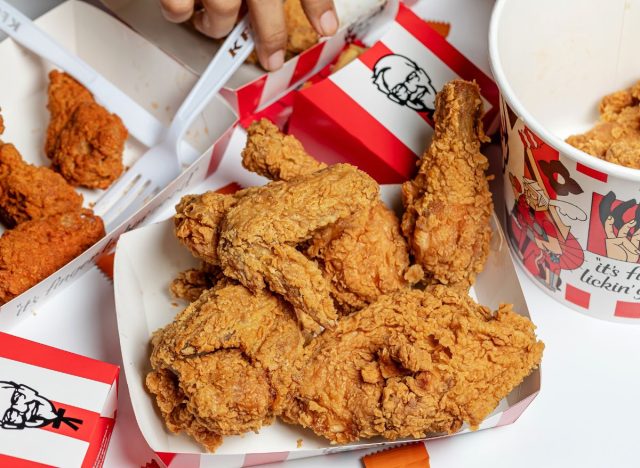
“Fried foods are also strongly associated with high blood pressure,” says Trista Best, RD at Balance One Supplements. “There are two primary reasons why fried foods can raise blood pressure. First, they contain saturated and trans fats, which can cause weight gain. Weight gain can cause blood pressure to rise as the heart has to work harder to pump blood through a larger area. Extra weight also puts strain on the kidneys, which is a vital organ in regulating blood pressure.”
“Second, fried foods are often associated with fat, but they also contain a significant portion of sodium. The breading and seasonings used to fry foods are often high in sodium as well.”
Eating too much fried food does more than just raise blood pressure. Overeating this kind of food leads to some particularly dangerous side effects.
Avoiding healthy fat
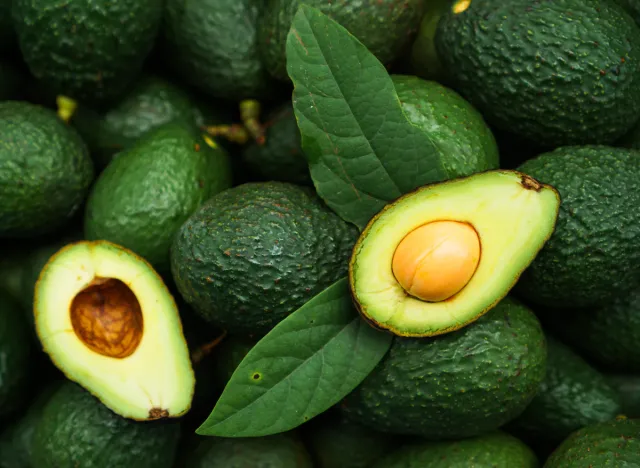
If you need to keep your blood pressure low, you don’t have to ditch fat entirely.
“Foods rich in healthy fats (unsaturated fatty acids) include extra virgin olive oil, avocados, fatty fish such as salmon, and nuts—all of which may help you manage your blood pressure,” says Katie Tomaschko, MS, RDN and contributor at Sporting Smiles. “This is because healthy fats such as omega-3 fatty acids may help reduce inflammation and blood vessel constricting compounds (known as oxylipins) in the body.”
Learn which fats you need in your diet with this list of 20 Healthy Fat Foods That Won’t Make You Fat.
Oversalting your food
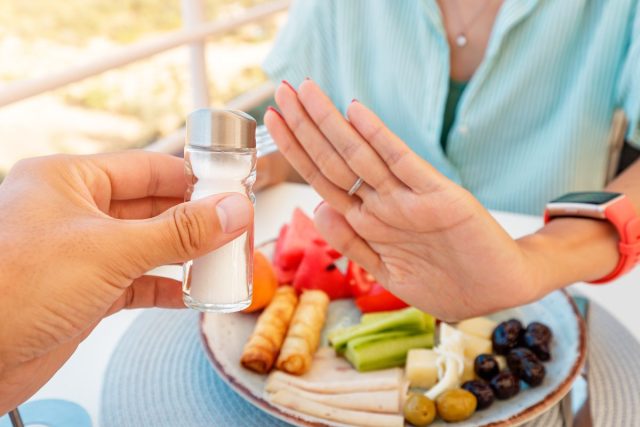
If you truly need to watch your blood pressure, make sure to go easy on the salt shaker when dinner is served.
“Salt contains sodium that is the main contributor to heart disease and high blood pressure,” says David Brendan, RD, Marketing Director & Chief Designer at Start Rowing. “So, if you have high blood pressure, you have to control your salt intake immediately. Avoid including foods that contain a high amount of salt in your diet chart.”


